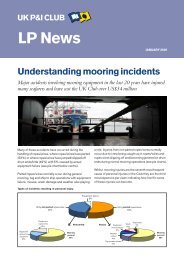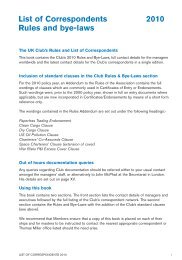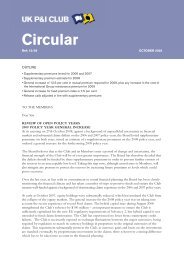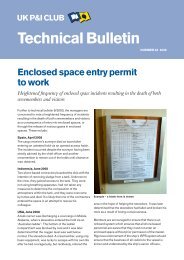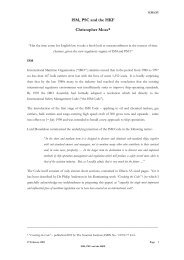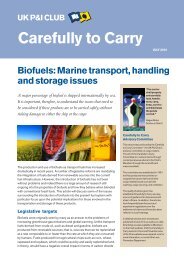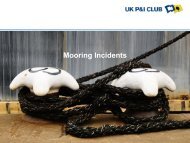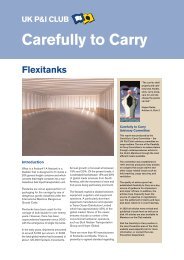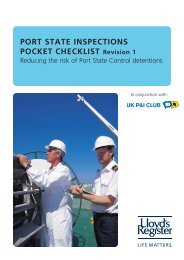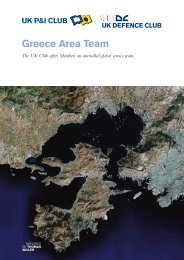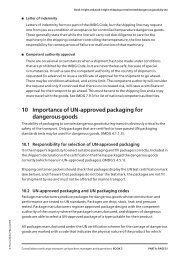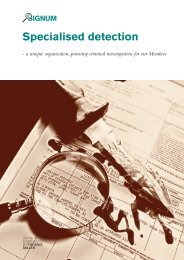2011 ROTY - UK P&I
2011 ROTY - UK P&I
2011 ROTY - UK P&I
You also want an ePaper? Increase the reach of your titles
YUMPU automatically turns print PDFs into web optimized ePapers that Google loves.
with longer hijack periods and increased<br />
use of violence to overcome defences.<br />
The Club’s website is regularly updated<br />
with piracy related information and the<br />
Managers have strongly recommended<br />
that owners take care to follow the<br />
industry Best Management Practices<br />
when sailing in the high risk area—<br />
which now extends almost to the shores<br />
of India. The need for self-defence has<br />
never been higher and a number of<br />
Members with ships having low speeds<br />
or low freeboards have assessed the risks<br />
as justifying the use of armed guards.<br />
Armed protection could eventually have<br />
its own dangers, especially if pirates<br />
counter stronger defences with stronger<br />
attacks. The Club recognises that there<br />
is a role for the use of private guards or<br />
(preferably) vessel protection detachments<br />
from navies in appropriate cases, but<br />
would remind Members that it is not<br />
a substitute for the basic anti-piracy<br />
measures recommended in the BMP.<br />
RISK & CAPITAL MANAGEMENT<br />
Risk and capital management have<br />
become an important focus of regulators<br />
and rating agencies alike in recent<br />
years. The Club has taken the issue<br />
of risk management seriously for<br />
some time within its Loss Prevention<br />
and Ship Inspection activities which<br />
represents the customer facing element<br />
of its risk management function. The<br />
development of the Individual Capital<br />
Assessment (ICA) regime by the <strong>UK</strong><br />
Financial Services Authority, over five<br />
years ago, led to the Club improving its<br />
management of risk across the business<br />
and using the ICA model to inform<br />
decisions in areas such as investment<br />
policy and reinsurance purchase. Whilst<br />
the techniques are becoming increasingly<br />
more sophisticated the underlying<br />
rationale remains the same, to manage<br />
risk and capital effectively for the benefit<br />
of Members, given the requirements<br />
of regulators and rating agencies.<br />
Central to managing risk across the<br />
business remains the quantitative and<br />
qualitative assessment of risk, which is<br />
focused on the Club’s internal risk model<br />
and the S&P rating model. Both of these<br />
models have been used for making key<br />
business decisions. The Club has now<br />
entered the Solvency 2 Internal Model<br />
Approval Process, which is the means<br />
by which the regulator will approve<br />
the Club’s approach to measuring its<br />
own Solvency Capital Requirement<br />
(SCR) under Solvency 2. The further<br />
development of the Club’s own risk<br />
model to meet these more exacting<br />
requirements will be taking place during<br />
<strong>2011</strong>. In addition to focusing on the<br />
Club’s insurance risks, the model will<br />
also provide a framework for one of the<br />
most important activities of an insurer,<br />
namely Asset-Liability Management,<br />
ALM. ALM ensures that an insurer<br />
matches the risk profile of the assets (the<br />
investment portfolio) with its liabilities,<br />
thereby protecting the capital base<br />
against an adverse change in claims,<br />
investments or currencies. ALM alone<br />
cannot protect an insurer against all<br />
risks. In its Corporate Plan, the Club<br />
considers not only the strategic direction<br />
of the Club, but also through thorough<br />
risk analysis the Plan identifies scenarios<br />
or extreme events that could seriously<br />
affect the Club’s financial position.<br />
The Club then considers the best way<br />
to mitigate these risks, some of which<br />
can be transferred through reinsurance,<br />
others through organisational processes<br />
and contingency plans. Finally, risks<br />
are also mitigated through holding a<br />
certain level of capital to meet solvency<br />
and regulatory requirements. Meeting<br />
regulatory capital standards is a minimum<br />
obligation, but the Club chooses to<br />
target a higher level of capital adequacy,<br />
13




